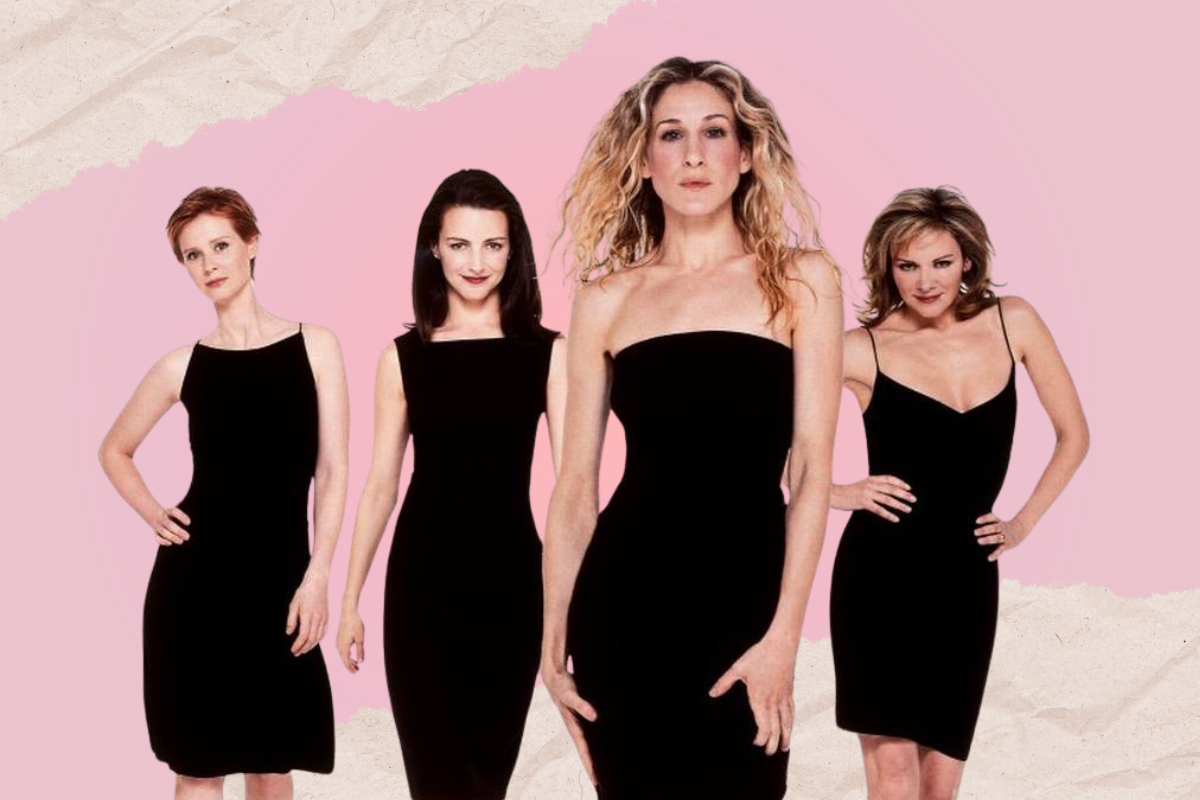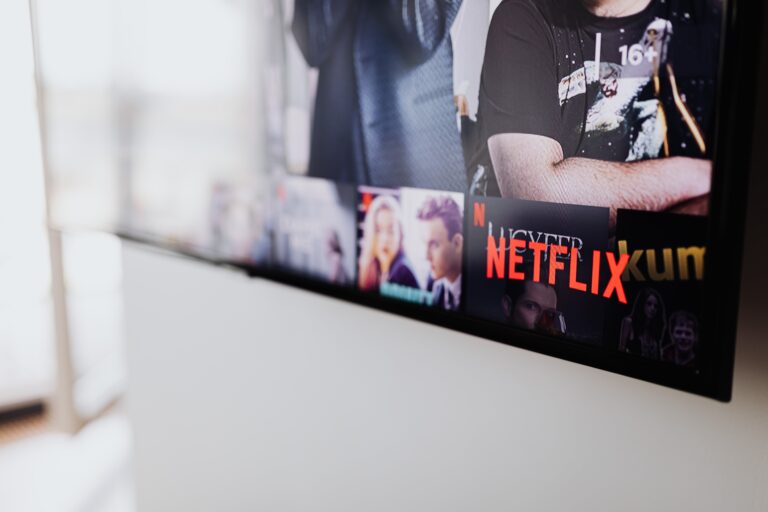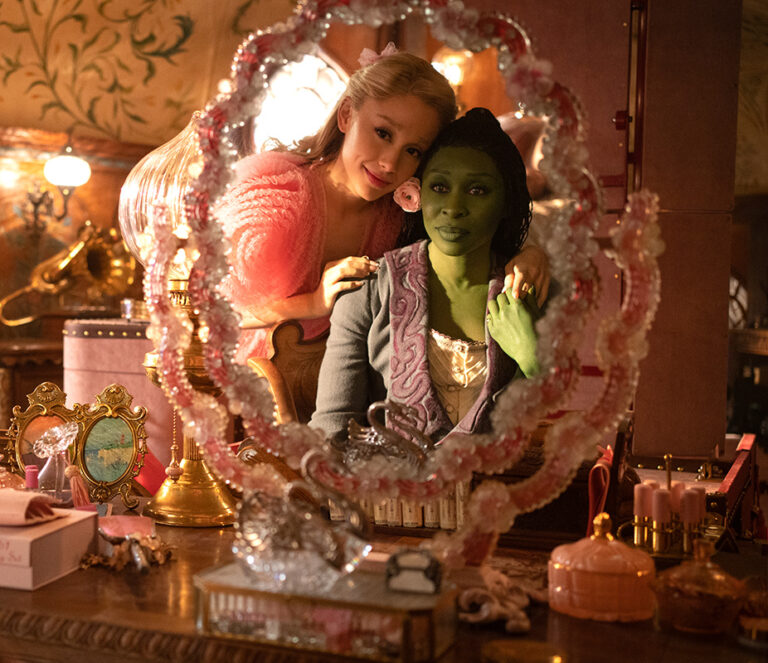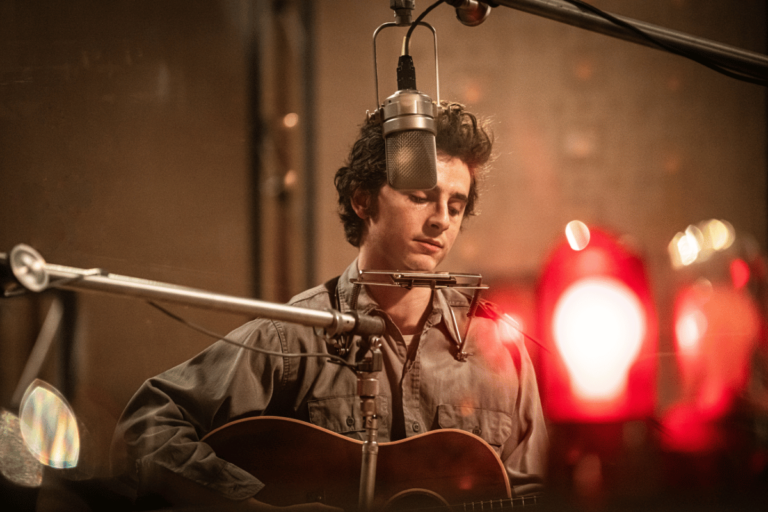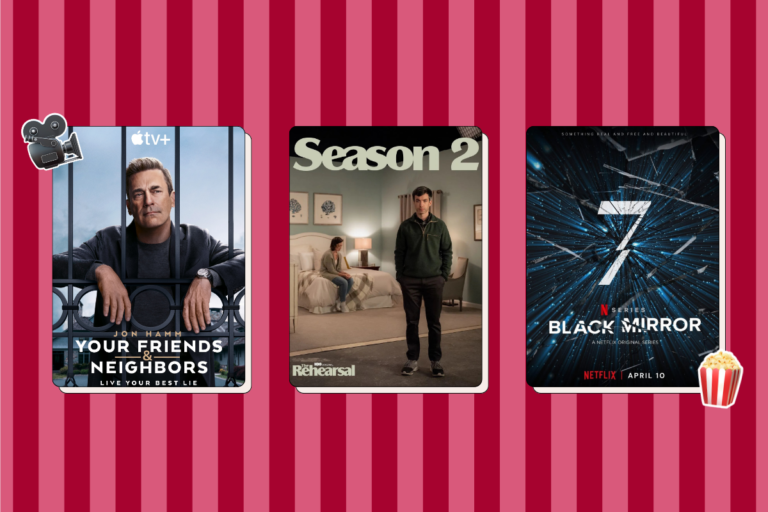From Cosmo’s to Carrie’s: A Deep Dive into Sex and the City
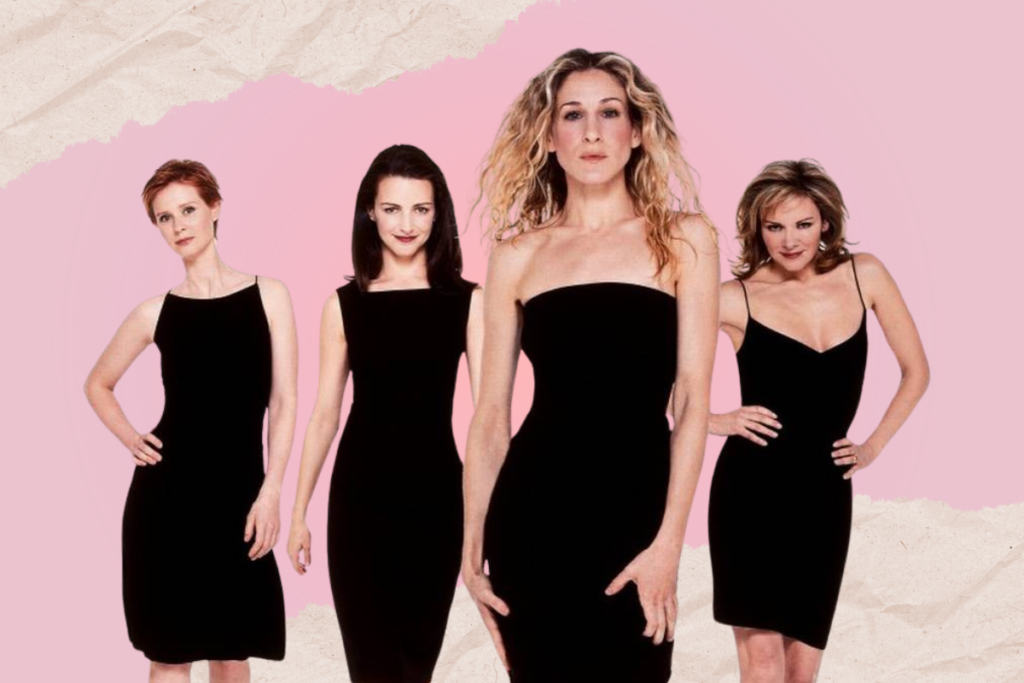
‘Welcome to the age of un-innocence. No one has breakfast at Tiffany’s, and no one has affairs to remember. Instead, we have breakfast at seven a.m., and affairs we try to forget as quickly as possible…’
In the bustling streets of turn-of-the-century Manhattan, amidst the clinking of cosmopolitans, four women redefined friendship, love, and the pursuit of happiness on our TV screens.
It’s June 1998, and an adaption of Candace Bushnell’s collection of articles is about to be screened for the first time. Running for six seasons, Sex and the City captivated millions with its candid portrayal of modern womanhood and relationships. Set against the backdrop of late 90s New York City, the show follows the lives of four fiercely independent women as they navigate the highs and lows of friendship, love, and loss in their 30s and 40s.
The show is currently undergoing a resurgence in popular culture, its enduring relevance is about to get the ‘Netflix Effect’ as it is put on the platform for the first time in the US. Carrie, Samantha, Miranda, and Charlotte are about to be exposed to a new generation.
My first experience of watching Sex and the City happened a year ago. Of course, I knew about it before, you could not miss it in the 2000s. It was strictly banned in my home, and that restriction made it this big, naughty, enigma for me (like watching an 18-rated film before you were 18) – something that if I dared to watch, I’d be changed as a person. In 2023, I was finishing my dissertation, and coming off the back of a film module called ‘Beyond Sex and the City: Becoming a Woman in Western Cinema’. We briefly spoke about the show at the start of the year, talking about its effect on culture at the turn of the century and how it affected shows like Girls, The Sex Lives of College Girls, and The Bold Type. We had mostly forgotten about it a couple of weeks later, but then I went through one of the biggest heartbreaks of my life – I was about to move away from my friends and start a new life outside of university. I was growing up. During this time, I remembered that I had impulsively bought the Sex and the City box set from a charity shop a few weeks before. So, as I plugged in my old DVD player and watched the show, I couldn’t help but wonder – was this what I was missing all my life?
The Single Girl:
Now, settle down, it’s time for a history lesson. Before Sex and the City, there was Helen Gurley Brown’s 1962 book, ‘Sex and the Single Girl’ – an advice book that encouraged all single women to become financially and sexually independent. The book outlined various situations that every single woman faced and how to handle them: from ‘Chapter 1: Woman Alone? Oh Come Now!’, to ‘Chapter 4: How to Be Sexy’, to ‘Chapter 12: The Affair: From the Beginning to the End’. Following the release of the book, Brown then went on to be the editor-in-chief of Cosmopolitan magazine and directly influenced how young women redefined their roles in society.
Following Brown’s book, a new wave overtook feminist thinking – the rise of the Cosmo Girl and post-feminism. The ‘pink-collared’ woman who took on the concepts presented by Brown, was somebody who had complete independence, who was sexually and financially liberated, and was a big capitalist consumer in society. This mode of thinking peaked in the 1990s, giving way to characters such as Bridget Jones and Ally McBeal. This concept of post-feminism – the idea that feminism had been achieved and there was complete gender equality in Western society, soon came under fire for not being realistic enough and was something that Candace Bushnell (and later SATC creator Darren Star) tackled head-on in Sex and the City.
Sex and the City:
‘It’s the end of love in Manhattan’, declares Carrie Bradshaw (Sarah Jessica Parker) in the opening episode. Carrie is a zany relationship columnist for ‘The New York Star’ and sets out in each episode to tackle a different aspect of womanhood, intimacy, and gender relations that are occurring with her and her friends. Carrie and her friends are the beating heart of Sex and the City, each initially defined by their own romantic stereotypes. As well as Carrie, we are joined by:
- Miranda Hobbes (Cynthia Nixon): A cynical lawyer with a no-nonsense attitude to men and dating. Often throughout the series, we find Miranda grappling between balancing her professional ambitions and self-sufficiency with her personal life.
- Charlotte York (Kristen Davis): A gallery curator and the designated hopeless romantic of the group, who dreams of finding her happily ever after and her dream man. We follow Charlotte through her first marriage (and divorce) to Trey MacDougal, suffering from fertility issues, and then finally finding love in the most unexpected place – with Harry Goldenblatt.
- And finally, the icon, the legend that is Samantha Jones (Kim Cattrall): A PR executive who is the embodiment of confidence and sexuality. Samantha is fearless and unapologetic in her pursuit of pleasure and independence. She has some of the best lines in the show and is easily one of the best characters of the 20th and 21st centuries.
As I began to watch Sex and the City for the first time, I began to see my friends in these characters, they reflected our genuine conversations and worries with life. The show riffed off traditional female stereotypes and wasn’t afraid to critique its forefathers (most notably The Mary Tyler Moore Show and Ally McBeal). Yes, initially the characters were vapid, jagged and high-feminine, but over time they developed layers. They were pioneers of female-focused characterisation in television, women could look at Carrie, Miranda, Charlotte and Samantha and think ‘Oh, that’s me too!’. They were neither good nor bad, they were the anti-heroes of their own stories (something most critics at the time tended to overlook). As Emily Nussbaum writes in her article:
“[Carrie and] Her friends went through changes, too, often upon being confronted with their worst flaws – Charlotte’s superficiality, Miranda’s caustic tongue, Samantha’s refusal to be vulnerable. In a departure from nearly all earlier half-hour comedies, the writers fully embraced the richness of serial storytelling.”
The impact these characters had on popular culture at the time cannot be downplayed. The show put HBO on the map, directly leading to shows like Euphoria and Game of Thrones. “Don’t laugh at me, but maybe we can be each other’s soulmates.”
There is a distinct tonal shift around season 4 of the show that needs to be acknowledged. The show begins to grapple with more serious subjects: cancer, unwanted motherhood, abortions, the aftermath of divorce. What was once previously superficial, ignorant, and outdated, becomes sentimental and challenges cultural leakages. The women begin to change.
Season 4 of Sex and the City began directly before the September 11, 2001 attacks on the World Trade Center, and the producers decided to split the season to a later period as a mark of respect for the victims and their families. Sex and the City (as it was before this period) was not what New York needed at this time. The title sequence of the show- which previously depicted the New York skyline (including the Twin Towers) was changed, and the characters were no longer allowed to ‘sleep’ through New York. The ‘long 90’s’ was over.
Something awoke in the show. In the episodes that follow, Charlotte and Trey get divorced, Miranda finds out she is pregnant and begins to deal with unexpected motherhood, Carrie struggles with independence and her relationship with Aiden, and Samantha lets down her tough exterior for the first time. Their characterisation changes in meaningful ways, alongside a changing Manhattan. They become more human.
It was during this time when ‘My Motherboard, My Self’ airs. It begins like a traditional episode until Miranda calls Carrie, telling her that her mother has suddenly passed away. Before this point, nobody of note had died in the show – and this is one of the first times where the group must deal with death. Their tough exteriors begin to crack, most significantly Miranda and Samantha.
What follows is a scene that absolutely destroys me. This is a funeral of a character we never saw, yet we can all feel the pain each woman is feeling, and why they feel that way.
Carrie is trying to understand how to be independent in a relationship with Aiden, Charlotte is dealing with a loss of identity, and Samantha is trying to understand how to process grief under that tough exterior. Miranda, however, is struggling to deal with grief as a single woman, under the belief that there is now nobody there for her.
Then, Samantha begins to cry. Her character, who so often was defined by her ability to stand tall cracks. She is struggling with her emotions for the first time in the show’s history- she’s beginning to look inwardly in the face of death. Her vulnerability highlights this tonal shift in the show.
Carrie closes out the episode by saying, “There’s a kind of support you ask for and a kind of support you don’t ask for… and then there is the kind that just shows up’.
Throughout Sex and the City, a support network between the women is established- but the importance of it is especially highlighted in season 4 following the 9/11 attacks. This breakdown of social relations in a time of vulnerability and mortality flows strongly throughout the rest of the show, the role of friendship as a form of connection says a lot about the human condition. The concept of a chosen family has never been so strong.
A Reparative Reading of Sex and the City:
Despite this, there are some genuine problems with Sex and the City. The show is not especially dated, but some moments reflect the turn of the 21st century that are insensitive. There is a big discussion on how Gen Z – as forward-thinking and inclusive as it is- is going to view the show. In a recent Independent article, Helen Coffey writes:
‘For all that flippant comments are made about “snowflake” Gen Z-ers and “woke” culture, it’s ignorant to suggest that the next generation is unable to enjoy art in its own specific context – alongside rightly calling out the language and scenes that no longer feel fit for purpose.’
Sex and the City benefits from what Eva Sedgwick calls ‘reparative reading’ – a concept that encourages a break away from ‘paranoid’ viewing of media. Pleasure drive allows the audience to find sustenance in media texts, advocating the potential that a show like Sex and the City has rather than ‘selecting and amplifying the negative’.
Instead of this, I encourage you- dear reader- to investigate the ‘Woke Charlotte’ memes from 2017, which takes the series’ most problematic moments and checks them for what they are. This recognition of the problematic aspects of the show- without dismissing the quality of the show- is exactly what Sedgwick means by ‘reparative reading’.
In conclusion:
Pop culture is currently in a stagnant state in terms of female-led shows. The resurgence of SATC online has sparked some hope for this writer that things will change. The show was iconic and revolutionary when it was released, it spawned so much of culture that we are still seeing the effects of today. What would fashion be without Carrie Bradshaw? Problematic TV boyfriends without Mr Big? It was bold and subversive, it’s what it was at the time. I sincerely hope everyone who watches it enjoys it as much as I did, it has truly gotten me through this past year. Thank you to Fiona Handyside for introducing it to me, I am truly grateful.
But we don’t talk about the second film.

